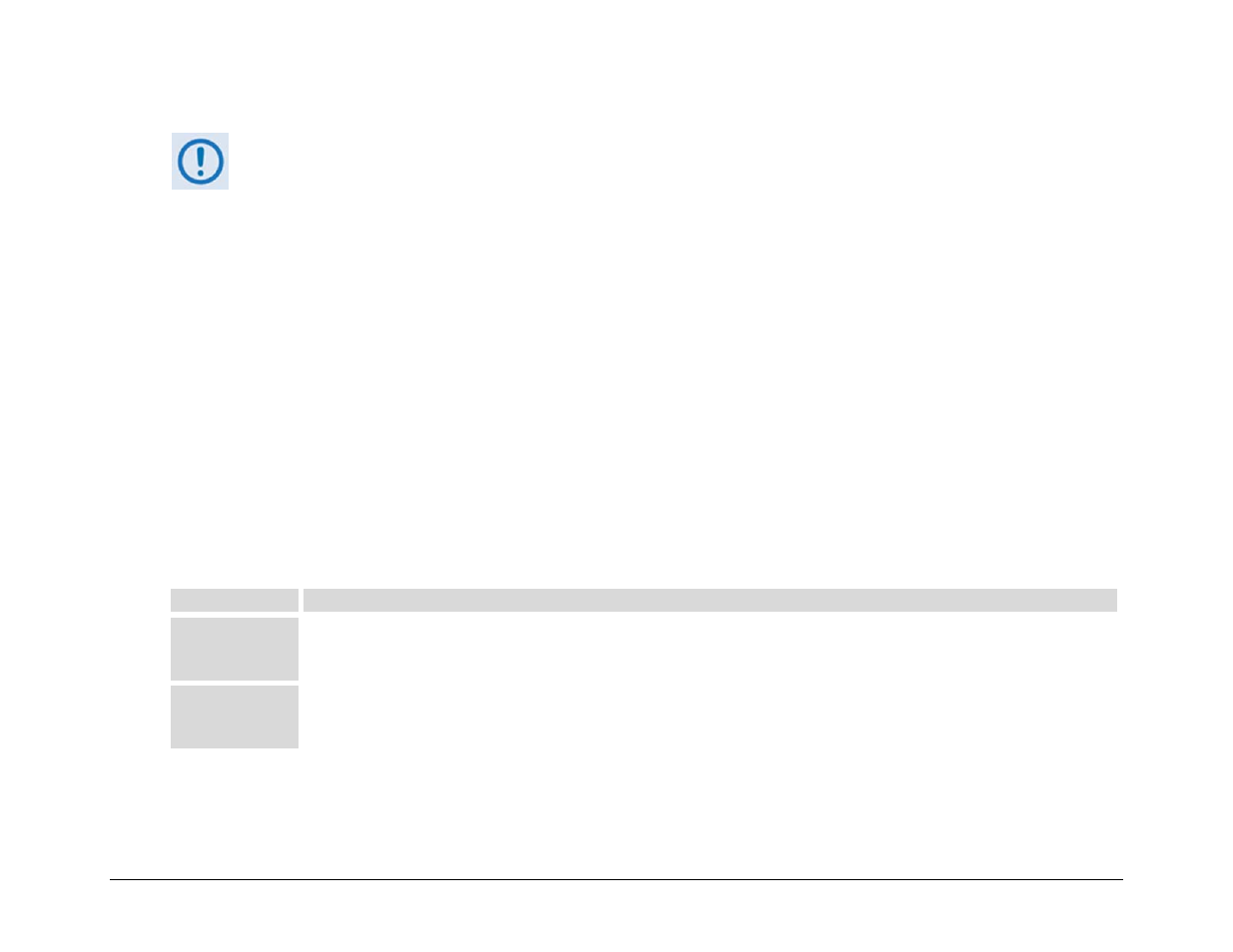D.5.3 address delimiter, D.5.4 instruction code, D.5.5 instruction code qualifier – Comtech EF Data CDM-570 User Manual
Page 354

CDM-570/570L Satellite Modem with Optional IP Module
Revision 12
Appendix D
MN/CDM570L.IOM
D–4
The Controller sends a packet with the address of a Target – the destination of the packet. When the Target responds,
the address used is the same address, to indicate to the Controller the source of the packet. The Controller does not
have its own address.
D.5.3 Address Delimiter
This is the “forward slash” character '/' (ASCII code 47).
D.5.4 Instruction Code
This is a three-character alphabetic sequence, which identifies the subject of the message. Wherever possible, the instruction codes have
been chosen to have some significance – e.g., TFQ for Transmit FreQuency, RMD for Receive MoDulation type, etc. This aids in the
readability of the message, should it be displayed in its raw ASCII form. Only upper case alphabetic characters may be used (A-Z, ASCII
codes 65 to 90).
D.5.5 Instruction Code Qualifier
This is a single character, which further qualifies the preceding Instruction Code. Code Qualifiers obey the following rules:
1. From Controller-to-Target, the only permitted values are:
Symbol
Function
=
(ASCII code 61)
The ‘=’ code is used as the Assignment Operator (AO) and is used to indicate that the parameter defined by the preceding byte should be
set to the value of the argument (s) which follow it.
For example: In a message from Controller-to-Target, TFQ=0950.0000 would mean “set the transmit frequency to 950 MHz.”
?
(ASCII code 63)
The ‘?’ code is used as the Query Operator (QO) and is used to indicate that the Target should return the current value of the parameters
defined by the preceding byte.
For example: In a message from Controller-to-Target, TFQ? would mean “return the current value of the transmit frequency.”